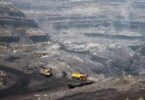Monitoring Desk
Forest fires in California. Drought in the Southwest. Hurricanes in the Gulf. Flooding in New Jersey. Recent months have been filled with the deadly impact of extreme weather. Weather that scientists tell us is increasingly driven by climate change. With each new calamity, calls increase to better prepare for a future of frequent deadly weather events. But while such adaptation is surely going to be needed, if we don’t mitigate the underlying problem, reducing the emissions of greenhouse gases, we will be speeding ahead into an uncertain world.
Calls to mitigate climate change and to reduce emissions to net-zero are nothing new. Scientists having been sounding the alarm for decades. Yet, decarbonization as it is called, can be overwhelming. Fossil fuels are the backbone of our global economy. They fuel our cars, power our electrical plants, heat our homes. They are a vital feedstock for farming and manufacturing. How can we possibly eliminate them?
To understand the scope of the problem, it is helpful to know where emissions occur. About one-quarter of global emissions come from electricity production, primarily coal and natural gas plants. One-fifth of emissions come from industrial processes like the production of steel, cement and petrochemicals. Roughly 15 percent come from the use of gasoline in automobiles. Extracting and refining of fossil fuels make up another 10 percent, including the release of methane during fracking. Another 5 percent come from heating buildings. About one-quarter of emissions come from agriculture, largely from the release of methane by livestock and the creation of nitrous oxide from fertilizers.
Each sector presents unique challenges. For some, there are reasons for hope. We are in the midst of a major technological disruption with the rise of battery-powered electric vehicles. The adoption rate of EVs is increasing, new entrants and established companies are rushing to offer models, and the cost of vehicles is decreasing. On its current trajectory, EVs may be cheaper than traditional cars by the end of the decade, if not sooner.
A similar miracle is occurring in renewable energy. The price of wind and solar power has seen steep declines over the past decade. In many places, wind and solar are on par with natural gas turbines. Yet, challenges remain. To deal with intermittency – the sun doesn’t always shine and the wind doesn’t always blow – we will need to invest in substantial storage capacity and smart grid infrastructure that will encourage distributed sources of electricity generation.
Other sectors present even greater challenges. There are numerous alternatives to petroleum-based plastics, yet the demand for such plastics is increasing globally. While there are efforts to create “green cement,” these technologies are not yet market viable at scale. Biotech start-ups are pursuing lab-grown “clean” meat, but whether consumers are willing and can afford such products remains to be seen.
Yet, while the challenges are daunting, there are reasons for optimism. Markets have proven incredibly effective at diffusing new technologies when the economics become favorable. Economic history is marked by frequent “gales of creative destruction” as observed by economist Joseph Schumpeter. Think how quickly new digital technologies like smartphones and video streaming have become part of our lives. Clean technologies are gaining traction. What they need is a little push (or a big push in some cases).
As a matter of policy, economists advocate for putting a price in carbon such as a carbon tax. Advice which politicians promptly ignore especially here in the United States. Yet, there are numerous levers available to help advance clean technologies. Many of these need not be politically charged. Clean technologies are growth industries, creating jobs and driving international competitiveness. For a country like the U.S., there are huge economic opportunities in being a clean tech leader.
We need a broad technology policy that recognizes the specific needs of each emitting sector. Automobiles may need only a nudge – investments in charging infrastructure, perhaps a subsidy to retire old cars early. Electric utilities need massive infrastructure investment in storage, smart grids and building out renewable capacity. Industrials, such as steel and cement, need spending on research and development to explore alternative production technologies. Agriculture will need a broad array of policies to incentivize more sustainable farming and to encourage consumers to demand less carbon-intensive foods.
Climate change can be overwhelming. But we can, and must, get to the task of designing a decarbonized future. A well-designed technology policy can help accelerate clean alternatives and create new jobs and economic opportunities. Let’s not despair and get to making change happen.
Courtesy: (The Hill)






